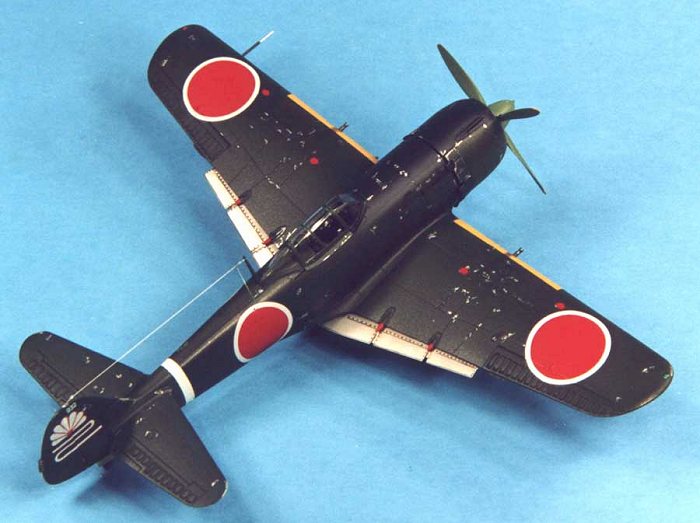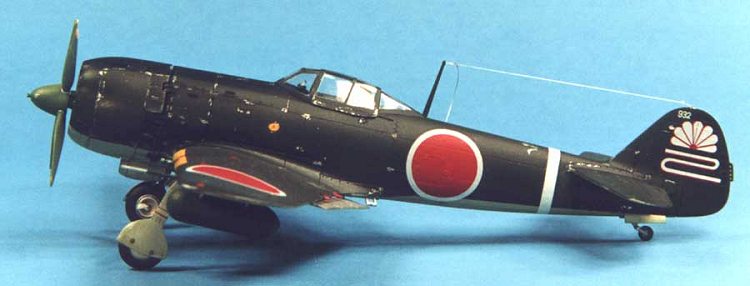
|
KIT # |
JT 67 |
|
PRICE: |
$22.00 |
|
DECALS: |
Two aircraft |
|
REVIEW & |
|
|
NOTES: |
|

|
HISTORY & KIT |
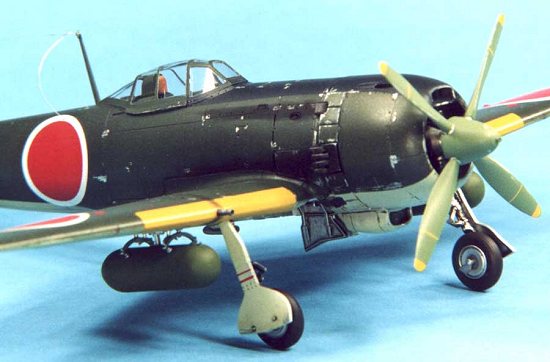 An excellent review of
this kit has been written by Scott . There is nothing more I can add and I agree
with everything he has written so I will not bore the reader with a rehash of
that review.
An excellent review of
this kit has been written by Scott . There is nothing more I can add and I agree
with everything he has written so I will not bore the reader with a rehash of
that review.
|
PAINT & DECALS |
I decided to use one of the kit supplied decal variants, a unit from the 22nd Flight Regiment. This scheme was a simple IJA Green topsides and IJA Gray undersides. Since I was planning on weathering the model with paint chipping, I first airbrushed a coat of Floquil Bright Silver. I then airbrushed Tamiya J.A. Green (XF-13) for the topside, and J.A. Gray (XF-14) for the undersides. The anti-glare panel was airbrushed with Aeromaster Mitsubishi Cowl Blue /Black (#1087). After letting the paint cure overnight, I attacked the finish along panel lines using a blunt pair of tweezers and tape to chip the surface to expose the underlying silver. I then airbrushed a light coat of Future to prepare the surface for decaling.
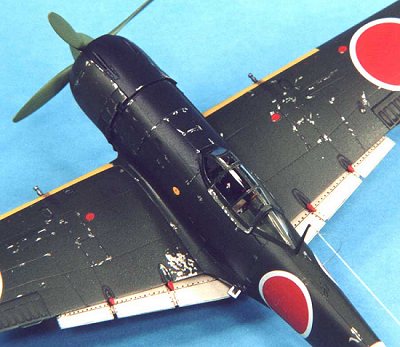 The decals supplied with the kit are typical Hasegawa, relatively nice but
unusable with most decal solvents (due to excessive wrinkling). I used
Microscale Micro Set, and the decals responded beautifully with no permanent
wrinkling and snuggled down well into the engraved detail without the need for
any solvents. After drying overnight, I wiped the decals off with a moist cloth
with Pollys Plastic Prep to remove any residue and after drying I shot a light
coat of Future over the decals to seal them.
The decals supplied with the kit are typical Hasegawa, relatively nice but
unusable with most decal solvents (due to excessive wrinkling). I used
Microscale Micro Set, and the decals responded beautifully with no permanent
wrinkling and snuggled down well into the engraved detail without the need for
any solvents. After drying overnight, I wiped the decals off with a moist cloth
with Pollys Plastic Prep to remove any residue and after drying I shot a light
coat of Future over the decals to seal them.
Next, a burnt umber oil wash was applied to the panel lines and after clean up a light coat of Polly S Flat Finish was shot to provide a surface for pastels. I then used pastels, and pastel pencils to lightly highlight the panel lines and detail on the wings/tail surfaces and fuselage. I use Derwent pastels and pencils and they are quite easy to use, just lightly draw on the surface to be highlighted and blend with artists blending stump. A very nice, subtle effect can be achieved with these pencils that is much easier for me than dry brushing or pre-shading. Next I applied a heavy burnt umber oil wash to the wheels and sealed everything with a light coat of Polly S Flat Finish.
|
CONCLUSIONS |
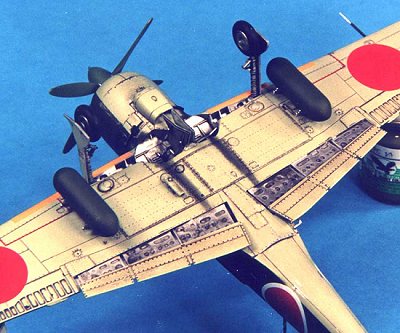 This is an excellent model of an important WW II aircraft. It is an extremely
easy build suitable for first time modelers, and not a single drop of putty was
used. Hasegawa is to be commended for this excellent model and the detail
present is absolutely outstanding.
This is an excellent model of an important WW II aircraft. It is an extremely
easy build suitable for first time modelers, and not a single drop of putty was
used. Hasegawa is to be commended for this excellent model and the detail
present is absolutely outstanding.
|
REFERENCES |
Schiffer Publishing, Nakajima KI-84 Hayate, SH0149, $14.95
Dai Nippon Books, Model Graphix Aero Detail Series, Aero Detail #24 Nakajima KI-84 Frank, $39.95
If you would like your product reviewed fairly and fairly quickly, please contact the editor or see other details in the Note to Contributors.
